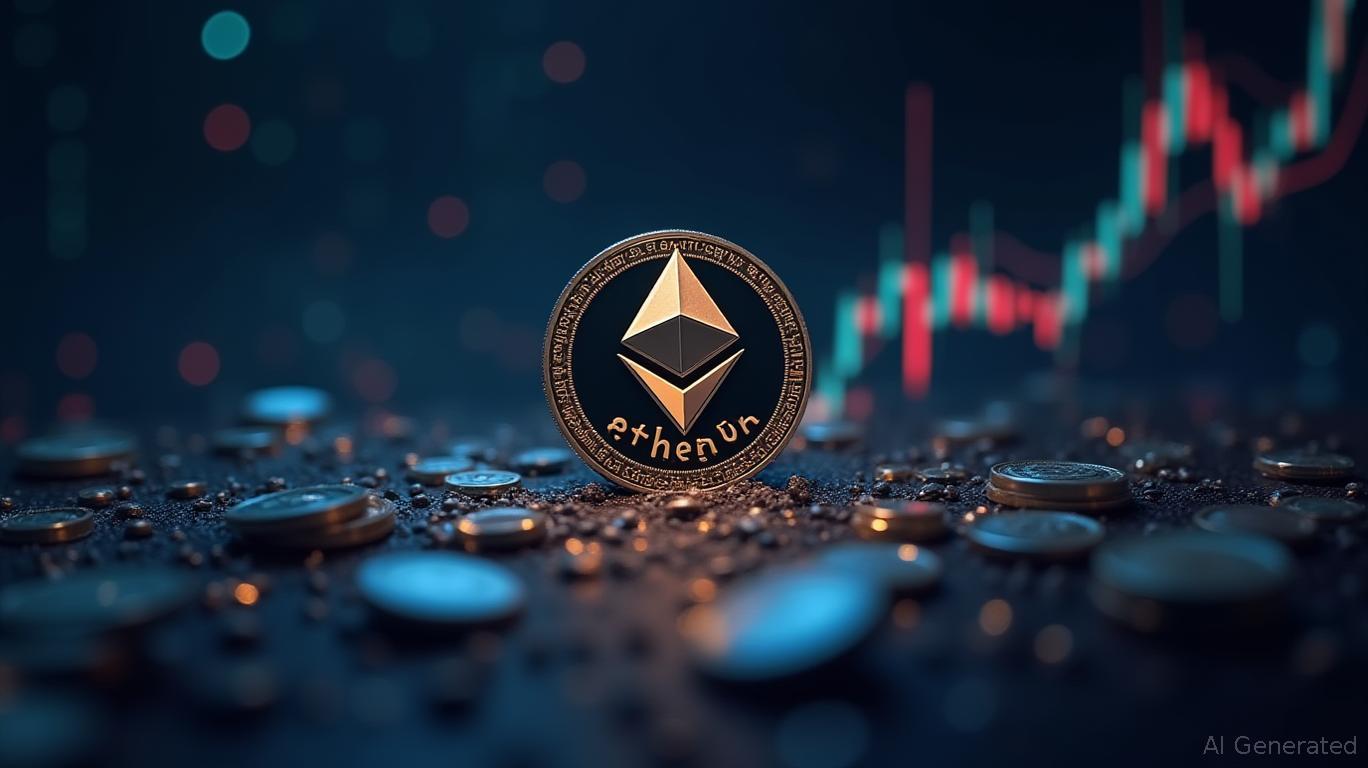AInvest Newsletter
Daily stocks & crypto headlines, free to your inbox
Ethereum has recently hit new highs, with its price surging over 20% in a single week to reach $3,600. This remarkable ascent has been driven by significant inflows into derivatives and arbitrage-driven ETFs, contributing to a market capitalization growth of $120 billion. The on-chain volume has also spiked, indicating a surge in trading activity. However, analysts have raised concerns about the sustainability of this rally, suggesting that the momentum might be fueled by speculative trading rather than fundamental value.
The recent price surge has been particularly notable, with Ethereum's value increasing by 6.4% to $3,647. This rally has seen Ethereum more than double in value over the past three months, outpacing many other cryptocurrencies. The price increase has been attributed to a combination of factors, including increased institutional interest and the growing adoption of Ethereum-based technologies. However, some analysts have expressed caution, noting that the rally could be driven by short-term speculative trading rather than long-term fundamentals.
One of the key drivers of Ethereum's recent price surge has been the influx of capital into ETFs. The $2.18 billion in U.S. ETF inflows has played a significant role in driving the price of Ethereum higher. This influx of capital has been driven by a combination of factors, including the growing interest in cryptocurrencies among institutional investors and the increasing availability of ETFs that track the price of Ethereum. However, there are concerns that the rally could be built on a bubble. Some analysts have pointed out that much of the momentum is coming from derivatives and arbitrage-driven ETF inflows, rather than from organic demand for Ethereum. This has led to questions about the sustainability of the rally and whether it could be followed by a sharp correction. Additionally, the fact that Ethereum's price has surged without touching retail exchanges has raised concerns about the underlying fundamentals of the cryptocurrency.
Despite these concerns, some analysts remain bullish on Ethereum's prospects. If the buying momentum continues, Ethereum could potentially reach highs of $10,000. This optimism is based on the growing adoption of Ethereum-based technologies and the increasing interest in cryptocurrencies among institutional investors. However, it is important to note that these predictions are based on speculative trading and may not reflect the underlying fundamentals of the cryptocurrency.
Ethereum’s 24-hour trading volume shows that derivatives are still doing the heavy lifting. Between the 10th and 17th of July, daily futures and perpetuals trading ranged from $39.5 billion to a massive $65.3 billion, completely overshadowing spot volumes, which barely nudged above $3 billion. Even on the 17th of July, with ETF-driven interest spiking, spot activity remained a small slice of the total market action. This persistent imbalance shows how little actual buying is backing ETH’s rally. The overwhelming share of volume is speculative, likely driven by short-term traders and arbitrage desks. Until the spot component grows meaningfully, the rally’s structure remains vulnerable to sudden unwinding by over-leveraged participants.
Ethereum ETFs just posted a record weekly net inflow of $1.78 billion, pushing total net assets to $17.3 billion. This looks like a resounding vote of confidence. But dig deeper, and it’s clear that much of this capital is likely tied to basis trades – delta-neutral strategies that profit from discrepancies between spot and futures prices. These aren’t long-only bets. They’re hedged positions where traders often short futures against ETF longs, applying latent sell pressure to derivatives markets. This arbitrage dynamic artificially boosts ETF flows without actually indicating directional conviction.
The ‘Basis trade’ is booming again. The 30-day Weighted Annualized ETH Basis Return has surged to 14%, its highest since early March. That spike reflects widening gaps between spot and futures pricing – fertile ground for arbitrage, but also a warning sign. Aggressive basis expansion has usually coincided with highly leveraged market conditions. Traders borrow to exploit spreads, inflating derivatives activity without meaningful spot participation. The problem? These flows can reverse fast, especially when funding flips negative or volatility returns. To sustain the rally, ETH needs more than just basis-driven liquidity. It needs long-only inflows, genuine conviction, and real demand – none of which are clearly visible yet. Without that shift, price strength remains at the mercy of derivatives.

Quickly understand the history and background of various well-known coins

Nov.05 2025

Nov.05 2025

Nov.05 2025

Nov.05 2025

Nov.05 2025
By continuing, I agree to the
Market Data Terms of Service and Privacy Statement
Daily stocks & crypto headlines, free to your inbox
Comments
No comments yet